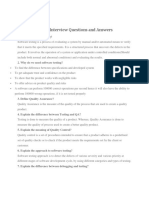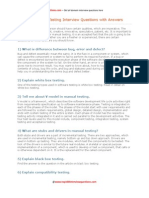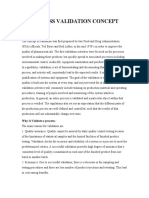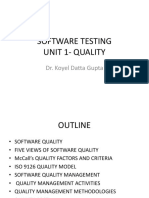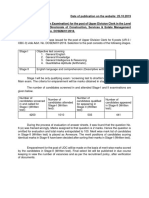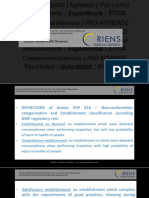0% found this document useful (0 votes)
12 views2 pagesSoftware Testing Interview Questions Answers
The document provides a comprehensive list of software testing interview questions and answers suitable for freshers. Key topics include definitions of software testing, differences between verification and validation, and various testing methodologies such as SDLC, STLC, and different testing types. It also covers concepts like bug vs defect, severity vs priority, and agile testing frameworks.
Uploaded by
w9qxfpc28rCopyright
© © All Rights Reserved
We take content rights seriously. If you suspect this is your content, claim it here.
Available Formats
Download as PDF, TXT or read online on Scribd
0% found this document useful (0 votes)
12 views2 pagesSoftware Testing Interview Questions Answers
The document provides a comprehensive list of software testing interview questions and answers suitable for freshers. Key topics include definitions of software testing, differences between verification and validation, and various testing methodologies such as SDLC, STLC, and different testing types. It also covers concepts like bug vs defect, severity vs priority, and agile testing frameworks.
Uploaded by
w9qxfpc28rCopyright
© © All Rights Reserved
We take content rights seriously. If you suspect this is your content, claim it here.
Available Formats
Download as PDF, TXT or read online on Scribd
/ 2




























